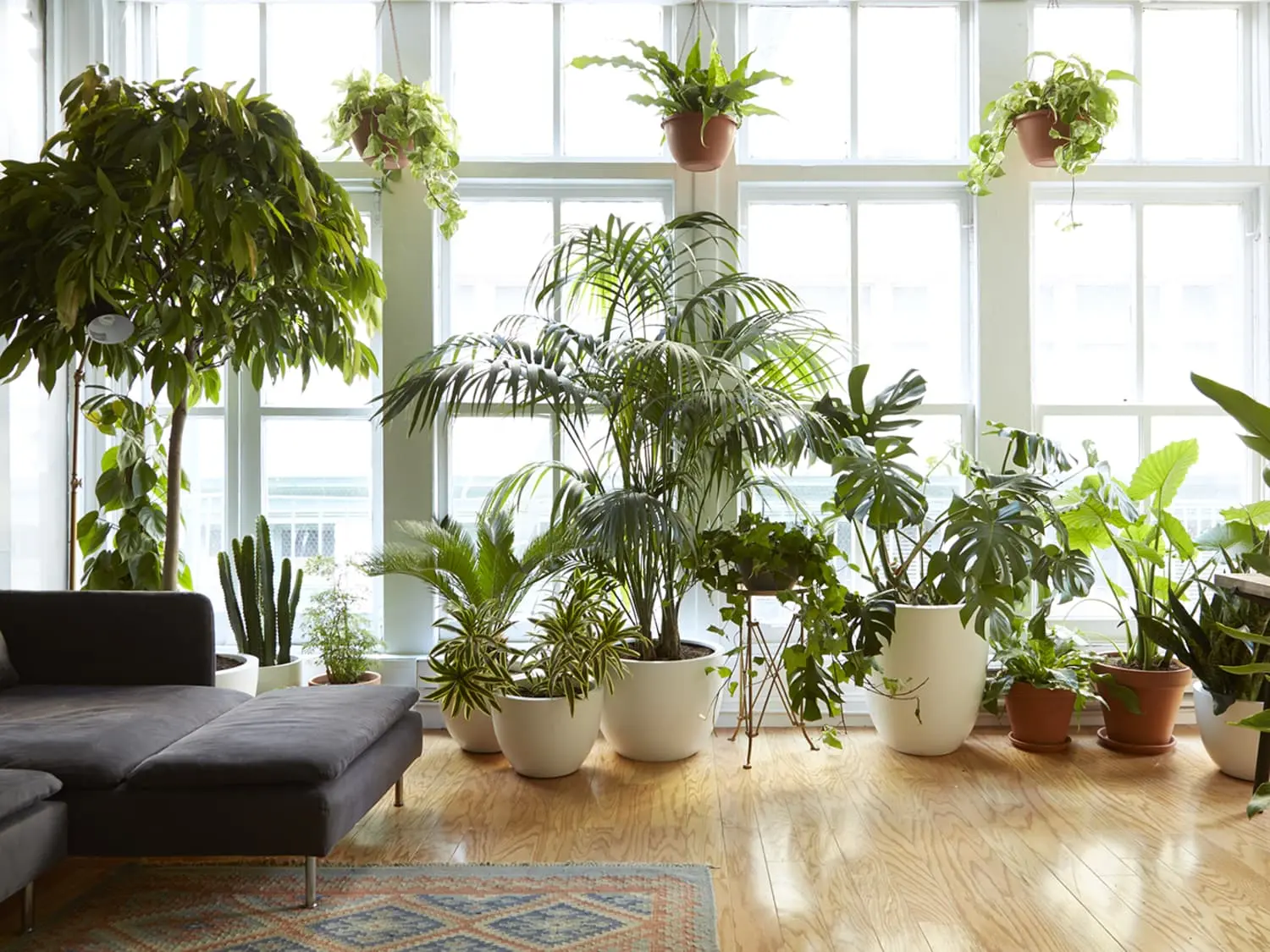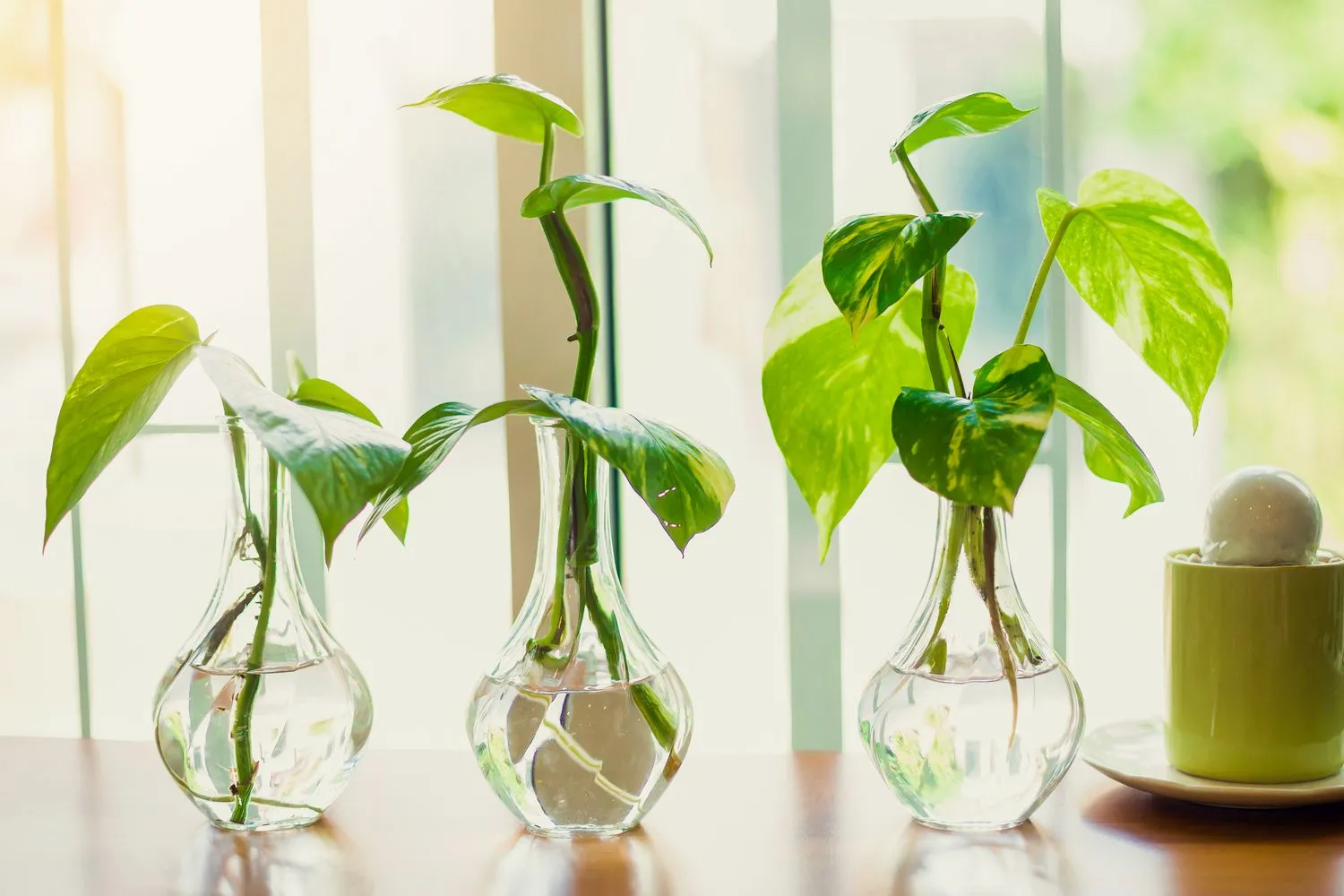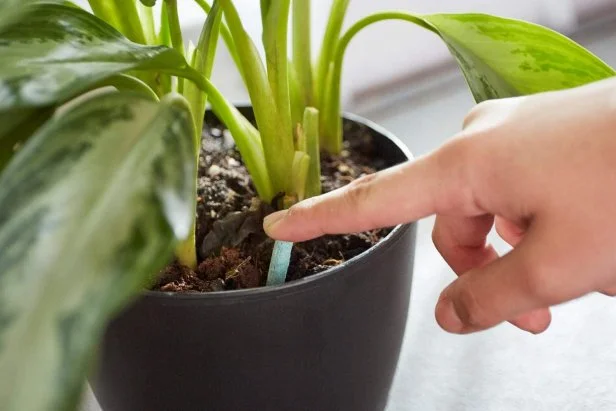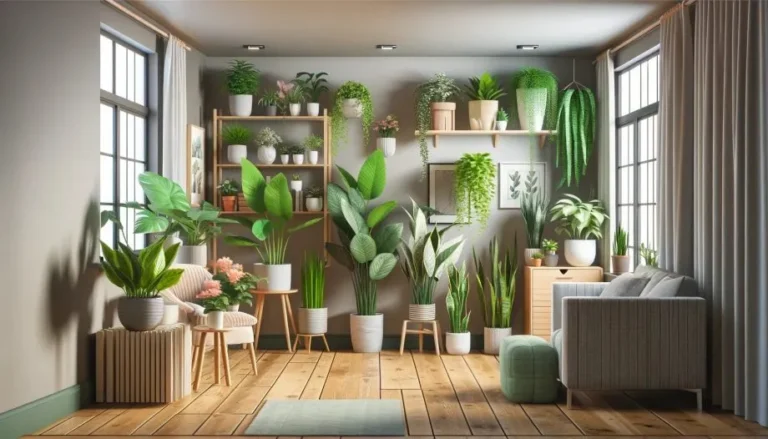Contents
Introduction
Are you dreaming of adding a touch of green to your small apartment but unsure where to start? You’re not alone! Indoor plants are more than just a pretty decoration; they can boost your mood, improve air quality, and even make your space feel more like home. But let’s face it, taking care of plants in a tiny apartment can seem like a big task, especially if you’re new to plant care.
The good news is that caring for plants doesn’t have to be complicated. In fact, with just a few simple tips, you can create a lush, vibrant indoor garden—even in a cozy apartment. This guide is here to help you get started, offering easy-to-follow advice that takes the guesswork out of plant care. We’ll cover everything from choosing the right plants for your space to understanding light conditions and watering needs.
We’ll also dive into practical tips for making the most of your limited space, like how to use vertical areas and creative displays to showcase your new plant buddies. So, if you’ve ever felt overwhelmed by the thought of plant care, don’t worry. We’ve got you covered with straightforward advice to help you grow your green thumb and enjoy all the benefits that come with having plants in your apartment.
Ready to turn your small space into a green oasis? Let’s get started on this easy and enjoyable journey into plant care!
Choosing the Right Plants
So you’ve decided you want to bring some greenery into your apartment—awesome choice! But with so many plant options out there, where do you start? Choosing the right plants can make all the difference, especially when space is limited and you’re just getting started. Don’t worry, though; we’re here to make this process as easy as pie!
First off, let’s talk about plants that are perfect for beginners. If you’re looking for something low-maintenance, succulents are a fantastic option. These little guys are like the superheroes of the plant world: they need very little water and can thrive in bright, indirect light. Plus, their compact size makes them perfect for small spaces!
Another great pick for apartment dwellers is the snake plant. Known for its tall, sleek leaves, it’s incredibly easy to care for. It can handle low light and only needs watering every few weeks. If you’re a busy bee, this plant is a great choice.
And let’s not forget about pothos. This plant is like a best friend who’s always there for you—easygoing and adaptable. It can grow in various light conditions and doesn’t need much water. Plus, its trailing vines can add a touch of elegance to any space.
When it comes to size and space, think small but mighty. Compact plants like air plants and small ferns are perfect for tiny apartments. They don’t take up much room and can fit into any nook or cranny. If you’re into the idea of hanging plants, consider spider plants or ivy. They’re great for utilizing vertical space and can bring a refreshing look to your decor.
In short, starting with easy-to-care-for plants will set you up for success and make your plant journey enjoyable. Plus, they’re forgiving if you forget to water them every now and then. So pick your favorites, and get ready to watch your little green friends thrive!
Understanding Light Conditions
Okay, let’s talk about light! One of the most important things you need to know about plant care is how light affects your plants. Don’t worry if you’re not a light expert—we’re going to break it down into easy-to-understand tips so you can get your plants the perfect amount of sunshine.

First up, let’s figure out the types of light your plants need. Most indoor plants love bright, indirect light. This means they don’t want to be blasted by direct sunlight all day, but they do need a lot of light to grow strong and healthy. Think of a spot near a window where they get plenty of natural light but aren’t exposed to the harsh rays that can burn their leaves. Plants like peace lilies and philodendrons do really well in these conditions.
Now, if your apartment doesn’t get a ton of natural light, don’t worry! There are plenty of plants that thrive in low light. The ZZ plant and the cast iron plant are champs at handling darker spots, so they’re perfect for rooms that don’t get much sunshine. Just remember, even these low-light lovers need some light to grow, so avoid placing them in completely dark corners.
Positioning your plants is key. If you’re placing them near windows, keep in mind that different spots get different amounts of light. For example, a south-facing window will give your plants a lot of bright light, while a north-facing window will offer more indirect light. If your windows don’t let in enough natural light, you might want to think about getting a grow light. These handy tools can give your plants the extra boost of light they need to stay happy and healthy.
In summary, understanding your apartment’s light conditions will help you choose the right plants and keep them thriving. Just match your plants to their preferred light levels and you’ll be on your way to a thriving indoor garden!
Watering Techniques
Alright, let’s dive into one of the most crucial aspects of plant care: watering! It sounds straightforward, but getting it just right can make a big difference for your plants. No need to stress—this guide will make watering your indoor plants a breeze.

First things first, let’s talk about how to tell if your plants need water. Overwatering and underwatering are common pitfalls, but luckily, they’re easy to avoid once you know what to look for. If you notice yellowing leaves or a musty smell coming from the soil, it might be a sign you’re giving your plant too much water. On the flip side, if your plant’s leaves are wilting or the soil feels dry and crumbly, it’s probably thirsty and needs a drink.
So, how often should you water? It depends on the type of plant you have. Succulents and cacti are pretty low-maintenance and only need watering when their soil is completely dry. On the other hand, plants like ferns and pothos generally need more frequent watering. A good rule of thumb is to check the soil once a week. Stick your finger about an inch into the soil—if it feels dry, it’s time to water. If it’s still moist, wait a bit longer.
Watering tools can also make your life easier. A watering can with a long spout is great for reaching the soil without making a mess. You can also use a moisture meter, a handy tool that tells you how wet or dry the soil is, so you don’t have to guess.
Remember, it’s better to water deeply but less frequently than to give a little water all the time. When you do water, make sure the water reaches the plant’s roots. This encourages the roots to grow deeper and makes your plant stronger.
In summary, getting the watering routine down is key to keeping your plants happy and healthy. By learning the signs of overwatering and underwatering, checking soil moisture regularly, and using the right tools, you’ll be well on your way to thriving plants!
Soil and Potting
Let’s get our hands dirty and talk about soil and potting! Choosing the right soil and pot for your plants might seem a bit confusing at first, but it’s actually pretty simple once you know what to look for. Let’s break it down so you can set your plants up for success.
First up, the soil. Not all soil is created equal, so it’s important to pick the right type for your plants. Most houseplants do well in a standard potting mix, which is designed to provide good drainage and nutrients. However, some plants have specific needs. For example, succulents and cacti prefer a mix that’s more sandy and well-draining, often labeled as cactus or succulent mix. This helps prevent root rot by allowing excess water to drain away quickly.

Drainage is crucial for healthy plants. Always choose a pot with drainage holes to avoid water pooling at the bottom. Without proper drainage, your plant’s roots can become waterlogged, leading to root rot. If you find a pot you love but it doesn’t have holes, you can add some yourself with a drill or use it as a decorative outer pot with a smaller pot inside that does have drainage holes.
When it comes to pot size, it’s best to start with a pot that’s just a bit larger than the plant’s root ball. Going too big can lead to overwatering issues because the soil will stay wet longer. As your plant grows, you can repot it into a larger pot as needed.
Decorative pots are a great way to add some personality to your space. Just make sure they’re functional too—look for pots that are not only stylish but also have good drainage. And if you’re using a decorative pot without drainage holes, remember to use a smaller pot inside it that has holes, so your plant’s roots stay healthy.
In summary, the right soil and pot make a huge difference in plant care. By choosing the appropriate soil mix, ensuring good drainage, and picking the right-sized pot, you’ll help your plants thrive and grow happily in your home!
Fertilizing
Let’s chat about fertilizing your plants! While it might sound like a complicated science experiment, fertilizing is actually pretty straightforward and can make a big difference in how your plants grow. Think of it as giving your plants a tasty snack to help them thrive.
So, what’s the deal with fertilizers? They’re basically a mix of nutrients that plants need to grow strong and healthy. There are two main types you’ll come across: liquid and granular. Liquid fertilizers are great because they’re easy to apply and get absorbed quickly by the plants. You just mix them with water and use them when you water your plants. Granular fertilizers, on the other hand, come in little pellets that you sprinkle on the soil. They break down slowly over time, releasing nutrients gradually.
You might see numbers on fertilizer packages like 10-10-10 or 20-10-10. These numbers represent the ratio of three key nutrients: nitrogen (N), phosphorus (P), and potassium (K). Each of these plays a different role in plant health. Nitrogen helps with leafy growth, phosphorus supports root and flower development, and potassium helps with overall plant health. For most houseplants, a balanced fertilizer like 10-10-10 works well.
Now, let’s talk about how often to fertilize. Generally, most plants benefit from a good feeding once a month during their growing season, which is usually spring and summer. During the fall and winter, many plants go into a bit of a rest period and don’t need as much food. Always follow the instructions on your fertilizer package to avoid overdoing it. Too much fertilizer can harm your plants and even lead to problems like leaf burn.
Lastly, remember that fertilizing isn’t a cure-all. It’s just one part of keeping your plants happy. Combine it with proper watering, good light, and the right soil to give your plants the best care possible.
In summary, fertilizing your plants is like giving them a nutrient boost to help them grow and flourish. With the right type of fertilizer and a simple feeding schedule, you’ll keep your indoor garden looking its best!
Pruning and Maintenance
Time to get your hands a little dirty again—let’s talk about pruning and maintenance! Taking care of your plants doesn’t just mean watering and feeding them; a bit of regular upkeep can help keep them looking their best and growing strong.
First up, pruning. This might sound intimidating, but it’s actually just a fancy way of saying “trimming your plants.” Pruning helps remove dead or yellowing leaves, which can make your plant look healthier and encourage new growth. If you spot any brown or withered leaves, just snip them off with a clean pair of scissors or pruning shears. This simple step can make a big difference in how your plant looks.
Another reason to prune is to manage the plant’s shape and size. Some plants, like pothos or spider plants, can grow long, trailing vines that might get a bit unruly. Pruning these vines not only keeps your plant looking neat but also encourages it to grow more bushy and full. Just trim back the vines to your desired length, and you’ll have a plant that’s both healthy and stylish.
Cleaning your plants is also an important part of maintenance. Dust can settle on leaves and make it harder for your plant to breathe and photosynthesize. To clean your plants, gently wipe the leaves with a damp cloth or give them a quick rinse under lukewarm water. For plants with larger leaves, like the rubber plant, a soft cloth works best. Regular cleaning helps keep your plants looking fresh and helps them stay healthy.
Lastly, keep an eye out for pests. Little critters like spider mites and aphids can sometimes make a home on your plants. Check the undersides of leaves and stems regularly. If you spot any pests, you can often get rid of them by washing the affected areas with a mild soap solution or using a natural pest control method.
In summary, regular pruning, cleaning, and pest checking are key to keeping your plants in tip-top shape. With a little bit of care, you’ll help your plants stay healthy and looking great!
Dealing with Common Problems
Even the best plant parents run into a few hiccups now and then, but don’t worry—most common plant problems are pretty easy to fix once you know what to look for. Let’s tackle some of the usual issues you might encounter and how to handle them.
First up, pests. Unfortunately, little bugs can sometimes find their way into your indoor garden. Common culprits include spider mites, aphids, and mealybugs. If you see tiny, moving spots on your plants or sticky residue on the leaves, you might have a pest problem. To get rid of them, start by gently washing your plant with a mild soap solution or using an insecticidal soap. Regularly inspecting your plants can help catch pests early before they become a bigger issue.
Next, let’s talk about plant diseases. Symptoms like spots on leaves, moldy patches, or unusual leaf drop can indicate your plant is unwell. Most plant diseases come from either too much moisture or poor air circulation. If you notice these issues, try adjusting your watering schedule and ensuring your plant has good airflow around it. Removing affected leaves and improving the overall environment can help your plant recover.
Temperature and humidity are also important factors. Plants are sensitive to their surroundings, so if your apartment is too hot or too cold, it can affect their health. Most houseplants prefer temperatures between 60-75°F (15-24°C). Avoid placing plants near drafty windows or heaters. For humidity, many plants, especially tropical ones, enjoy a bit of extra moisture in the air. You can boost humidity by placing a humidifier nearby or by grouping plants together.
Finally, sometimes plants just need a bit of adjustment in their care routine. If your plant is struggling, try changing its location to a spot with more or less light, depending on its needs. Make sure it’s in the right type of soil and that you’re watering it correctly. Plants can be quite forgiving, and a little tweak in their environment or care routine can make a big difference.
In summary, dealing with common plant problems often involves a bit of detective work and some minor adjustments. By keeping an eye out for pests, addressing diseases, managing temperature and humidity, and tweaking care routines, you’ll help your plants stay happy and healthy.
Creative Plant Displays
Ready to show off your plants in style? Creating creative plant displays can turn your small apartment into a green oasis, making your space feel more vibrant and inviting. Let’s dive into some fun and clever ways to showcase your indoor garden!
First up, let’s talk about using vertical space. When you’re short on floor space, going up can be a game-changer. Wall-mounted planters are a great way to add greenery without taking up precious room. You can find these in various styles, from sleek and modern to rustic and charming. Just mount them on your walls, and you’ll have a living piece of art that’s both beautiful and space-saving.
Hanging baskets are another fantastic option. These are perfect for trailing plants like pothos or ivy. Hang them from the ceiling or a wall hook to create a cascading effect that adds a touch of nature to any room. Plus, they’re a great way to utilize the upper part of your space, leaving more room on shelves and counters.
Speaking of shelves, plant shelves are an excellent way to display multiple plants at once. You can set up a few floating shelves or a tiered plant stand to create a lush display. Arrange plants at different heights and in varying sizes to create visual interest and make your plant collection the focal point of the room.
If you’re feeling crafty, terrariums are a fun DIY project that can be customized to your liking. These glass containers can house small plants, moss, and decorative elements like rocks or figurines. They’re perfect for adding a bit of greenery to coffee tables, desks, or any other small surface.
Lastly, don’t overlook the power of plant stands. They come in various styles and heights, allowing you to create a tiered effect or simply elevate your plants to eye level. Plant stands can also double as decorative pieces, adding personality and charm to your space.
In summary, creative plant displays are all about making the most of your space and adding a touch of green to your home. By using vertical space, hanging baskets, shelves, terrariums, and plant stands, you can turn your apartment into a stylish and welcoming indoor garden.
Conclusion
So, there you have it—everything you need to know to start your indoor plant journey in a small apartment! Taking care of plants can be incredibly rewarding, and with these simple tips, you’re well on your way to creating a lush, green sanctuary in your home.
Remember, the key to successful plant care is to start with easy-to-manage plants and gradually expand as you get more comfortable. Choosing the right plants, understanding their light and water needs, and providing the right soil and potting conditions will set you up for success. Don’t forget about the importance of regular maintenance, from pruning and cleaning to keeping an eye out for pests.
And if you ever run into problems, don’t panic! Most issues are easily fixable with a bit of observation and adjustment. Whether it’s dealing with pests, plant diseases, or adjusting to seasonal changes, your plants will appreciate your attention and care.
Finally, have fun with your plant displays! Using creative ideas like wall-mounted planters, hanging baskets, and stylish plant stands can transform your space into a vibrant, green oasis. Your apartment can be both small and full of life, thanks to your new plant friends.
So go ahead and embrace your green thumb. With a bit of practice and these handy tips, you’ll soon be enjoying the beauty and benefits of indoor plants. Happy planting!



